Having a Garden (When You Also Have Rabbits)

It all started when I found the tiniest baby rabbit–barely the size of a softball–hiding in our garden beneath the thickly planted Verbena bonariensis. Like a sweet Easter portrait, she was covered in purple blossoms that had shaken loose from the flowers around her and so was nicknamed “Petal, the baby bunny.” I had no idea then that her arrival would signal another seismic shift–much like this one–in my gardening philosophy and planting schemes. Petal–a terrible name but truly we had no idea she would stay for so long–made herself at home and grew up to be a happy and healthy adult with lots of subsequent kittens (did you know that’s what baby rabbits are called?) that she safely reared in our garden. After that first summer, your guess would be as good as mine as to who was who but there were always, always rabbits of various sizes hopping around our garden.
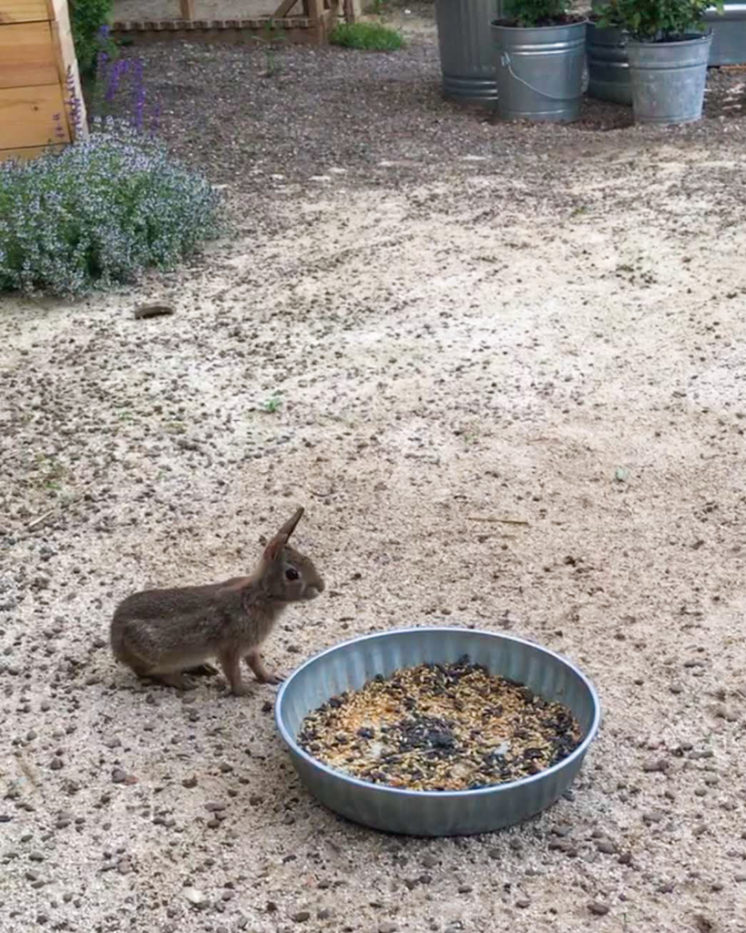
They were incredibly friendly. It wasn’t long before they learned I was safe and usually had food and they’d hop towards me when I came into the garden. Often, they would be right at my feet having a snack or simply taking a nap. I had lots of pet bunnies growing up but I hated keeping them in cages. This felt like all my childhood dreams come true; they were happy, I was happy. But it didn’t start out that way….at the beginning, it was rough.
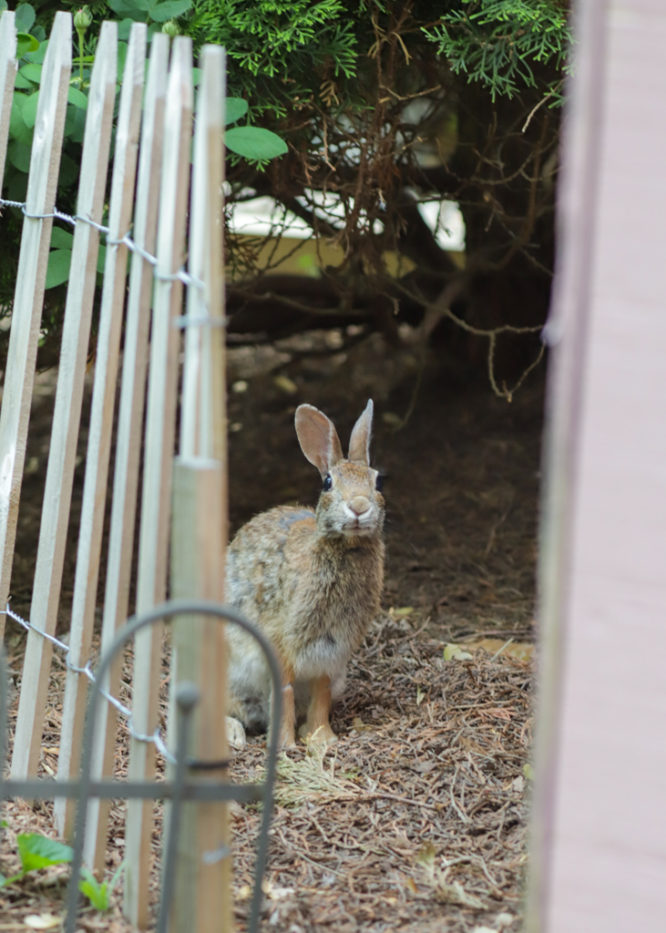
Before I continue into how we changed and managed our garden let me answer the questions that I’ve had in my Instagram DM’s over the past couple of years:
No, we did not try to “catch and release” our rabbits. It crossed our mind for about half a second when Petal was growing up and eating everything in sight but that’s just not what we’re about. Also, it would have been absolutely pointless as our town is filled with Eastern Cottontails. As a matter of fact, one time we saw what looked like an actual herd of bunnies running down the middle of our street. You know, like wild horses only rabbits?! So crazy.
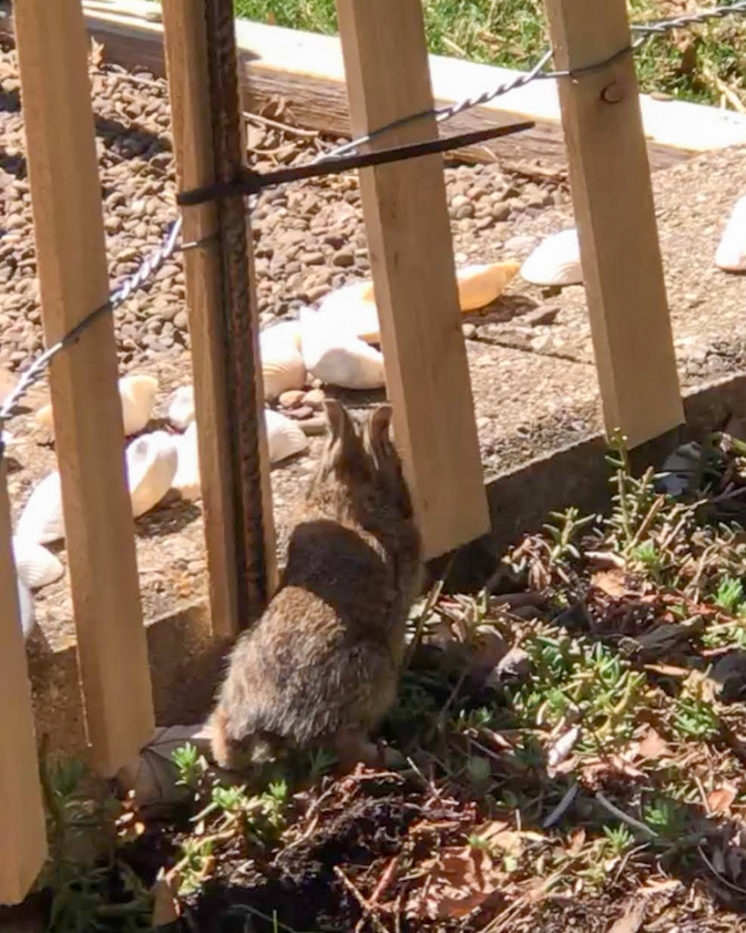
No, I never went out of my way to feed them. I was forever cognizant of not becoming “too friendly” with the rabbits because I didn’t want them to think all humans are safe. I did, however, let them eat out of the chicken food tray as much as they wanted when I brought it out. Many times they sat side-by-side with the chickens and ate together.

Back to the plants in the garden. At first, it was rough. Baby bunnies are eating machines. Before I figured out a game plan, all the clematis, lilies, young roses, campanula, helenium, the creeping phlox, the cosmos, even the rudbeckia were leveled. First, I tried Liquid Fence which had minimal results. That stuff works better on deer in my experience. Then I got smart and changed up what I grew and how I gardened.

Plants that were particularly tasty to rabbits were enclosed with a circle of hardware cloth. I used this technique to protect the young, tender roses, the base of the clematis vines and even the lilies. We called these contraptions “hoopties” as in, “Did you make a hoopty for the new Clematis I planted?” Once the foliage filled up, the hoopties became less noticeable.
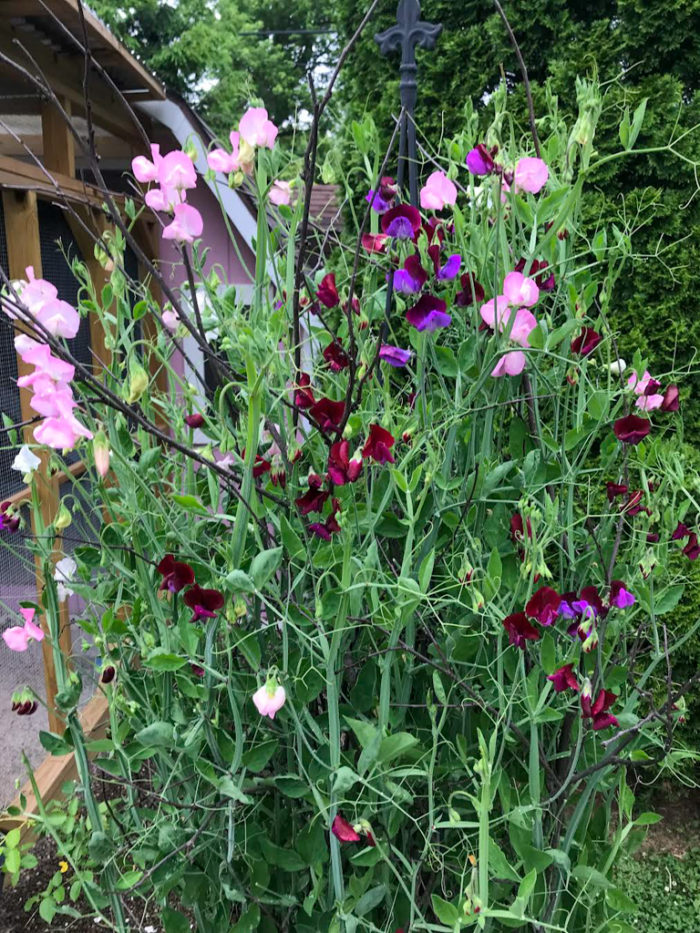
Some plants I simply decided to grow in containers out of their reach. These sweet peas are an example of some of our container grown flowers. The cosmos were also grown in containers. But keep in mind, if it’s low enough, the rabbits will simply reach up and eat the plants like the bunny is doing with my mums, below.

As the roses and clematis grew larger and developed woodier bases, they were fairly safe from being eaten. I also noticed the roses that had denser prickles were left untouched, unsurprisingly.
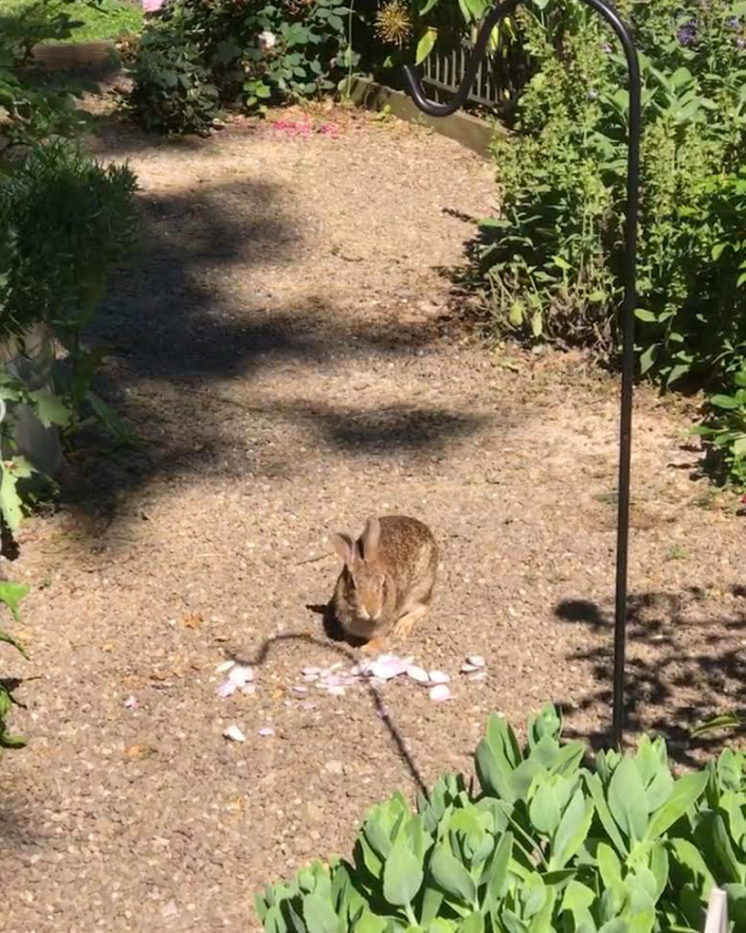
Since I knew the rabbits loved to eat rose petals in particular, when deadheading the roses I simply dropped the spent flowers on the ground and by the next morning they would be gone. (Since I do not spray my roses, I felt it was safe to leave them there to be eaten.)
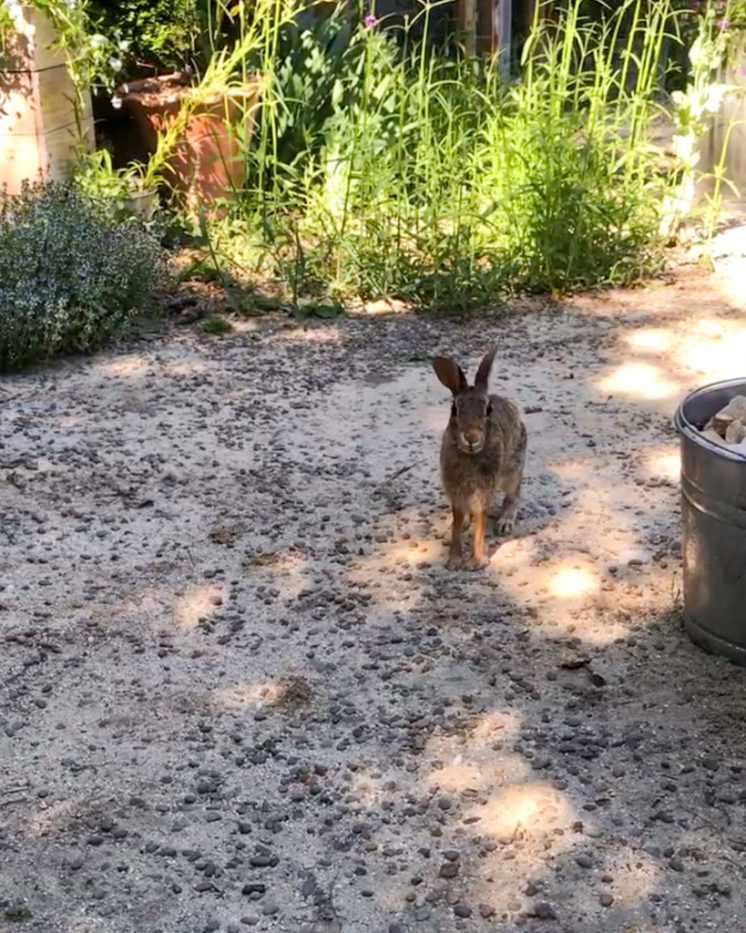
Finally, I developed a more philosophical approach to what I grew. I’ve always felt that we should strive to garden alongside wildlife, not against it. I already had a garden filled with birds and pollinators but now I had an extended family of friendly rabbits so I needed to change up my planting schemes a bit. I paid close attention to the kinds of plants that the rabbits never ate and when a gap opened up I pulled from this list which I’ll share with you. (I’m not going to spend too much time on woody shrubs and trees in this post or it would be a mile long. This list is mainly for the flowering herbaceous perennials and annuals with a few notes about the roses.)


Flowering Herbs such as: Rosemary, Lavender, Thyme, Sage, Germander, Oregano. I suppose it will come as no great shock that the rabbits completely ignored all the strongly-scented flowering herbs that we had growing in our garden. They were completely untouched. An added benefit to these plants is that the chickens also left them alone and some of them, like the thyme, were so sturdy that the hens could stomp across them to no ill effect.

Next, all the plants in “the mint family,” Lamiaceae, (plants with square stems) which besides some of the flowering herbs I mentioned earlier also include: Nepeta, Salvia, Agastache to name a few.

Verbena bonariensis, although not actually in the mint family even though it has square stems, is another plant that was never eaten by the rabbits. Ours reseeded so aggressively, though, it might have been nice if the rabbits thinned them out for me. 😉
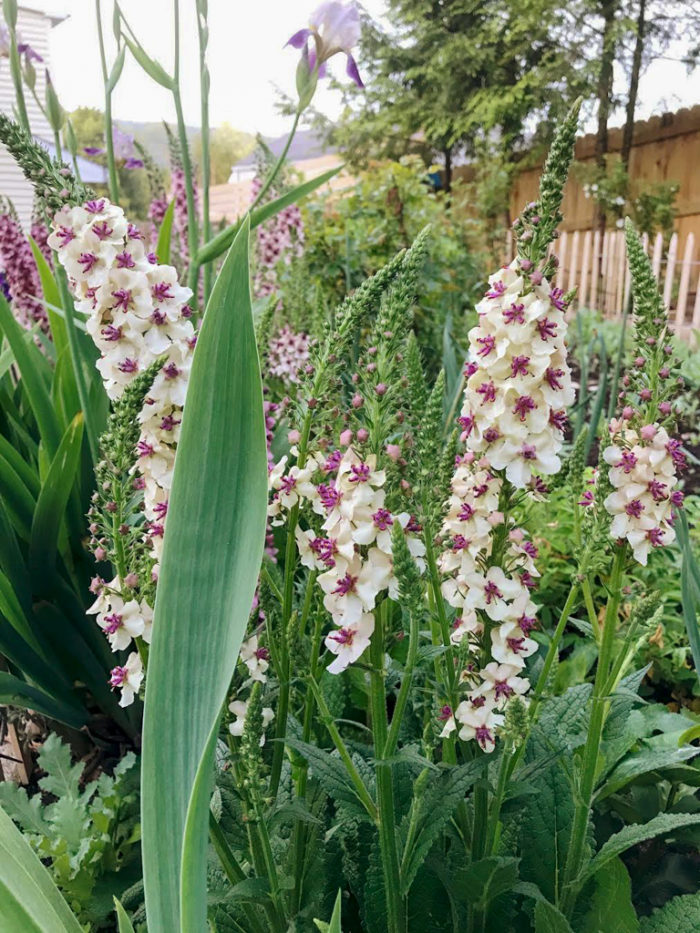
We grew many Verbascum ‘Southern Charm’ plants and none of them were ever eaten. I imagine other Mullein would be the same.
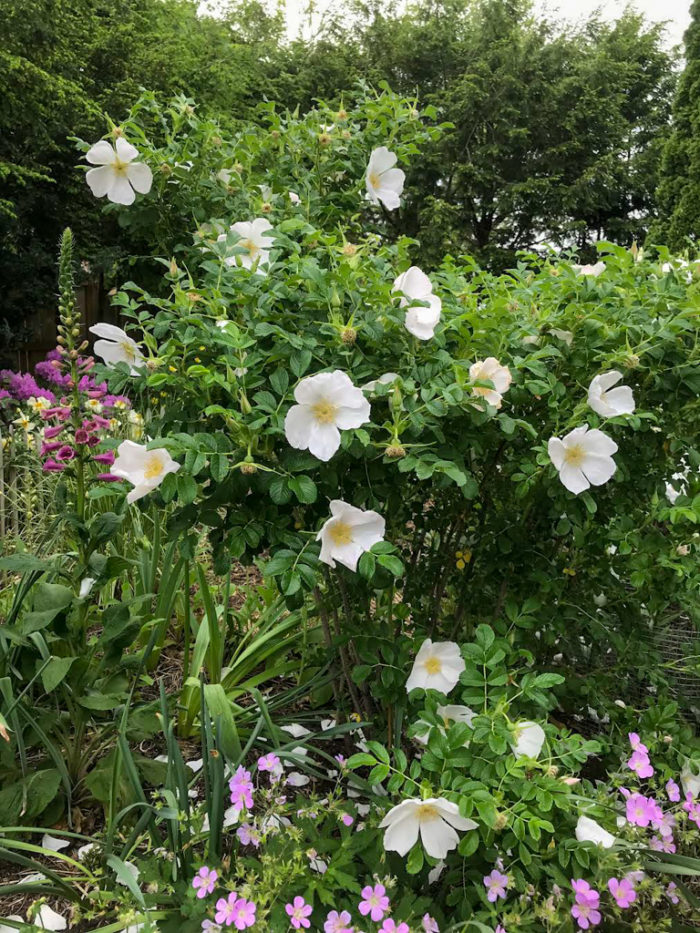
We had many Hardy Geranium that were also completely fine. I love how this is a plant that happily weaves through others as it’s doing here at the base of R rugosa Alba. It’s such an easy plant to grow.

The Nicotiana was also ignored by the rabbits. This is the variety ‘Lime Green’ which I purchased as seeds and tossed into the garden to germinate where they landed.

Near the Nicotiana we also grew a few Gaura plants which were untouched. Here is one mingling with some anemones which I talk a bit more about at the bottom of this post.
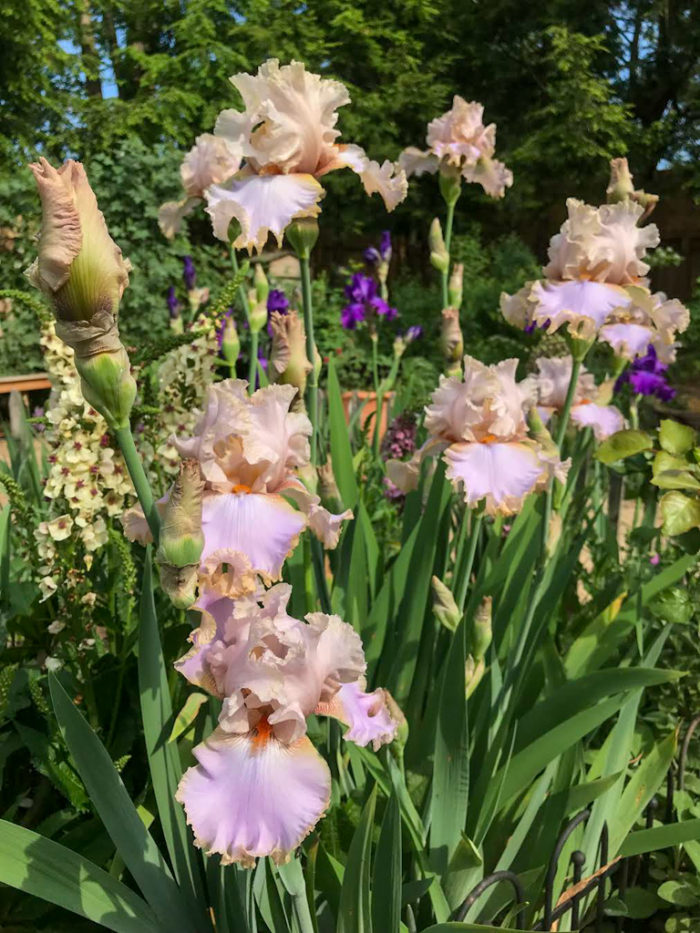
Thank goodness the Bearded Iris were not at all bothered by the rabbits as they’re one of my favorite flowers.

Same goes for the Hellebore which is such a great garden plant and the rabbits wanted nothing to do with. Pro Tip: If you live near a Trader Joe’s, keep an eye out for hellebores which show up around Christmastime and cost about $10 each.
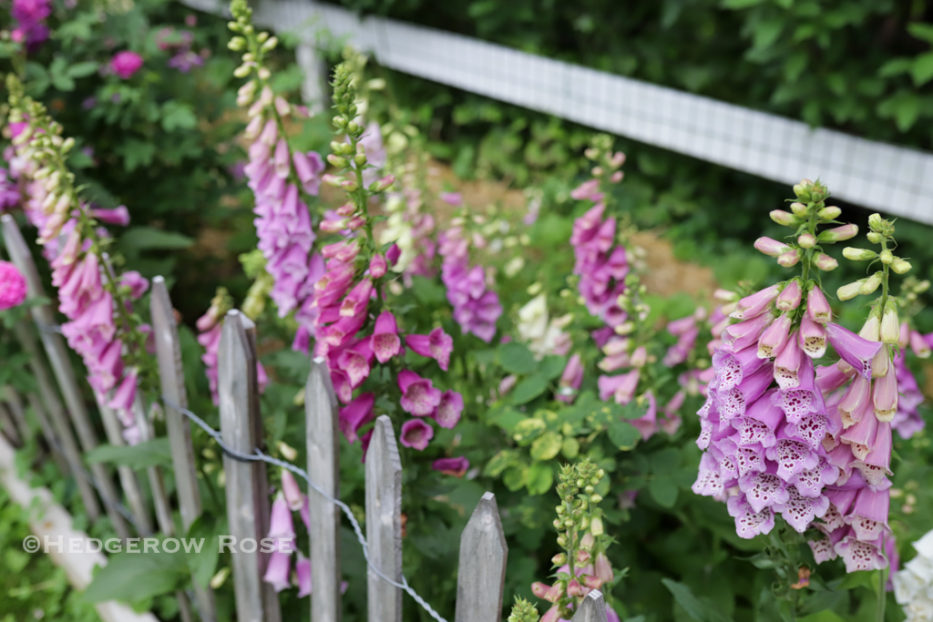
It’s probably not surprising that the Digitalis was not eaten being that it is a poisonous plant. These are 3rd generation seedlings from a Johnny’s Seeds packet.

The Pulmonaria was safe from hungry rabbits, as well. One of the nice things about Pulmonaria, too, is that it reseeds and spreads in a pleasing manner.
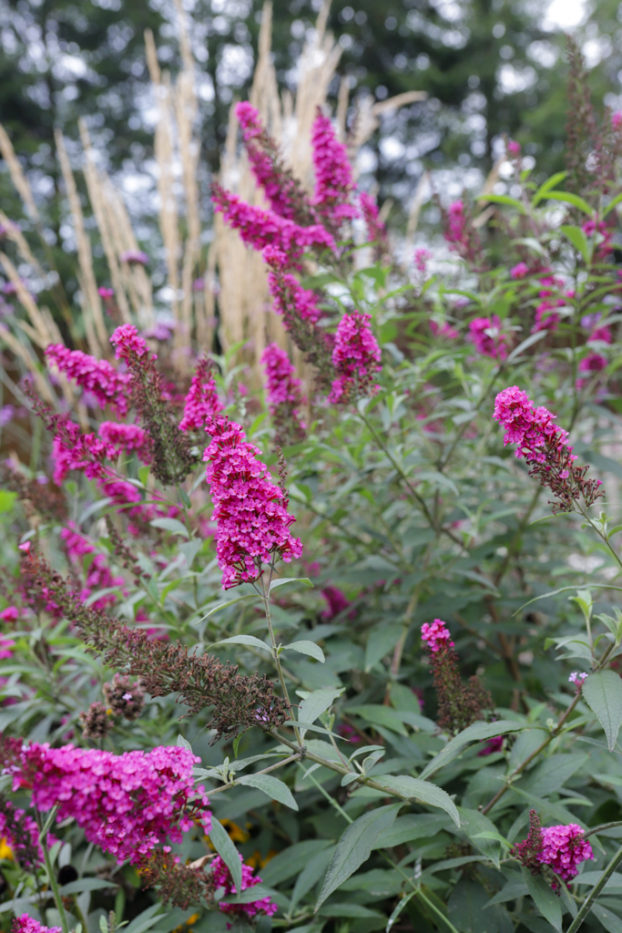
Some of the more shrubby plants like the Buddleia, the Hibiscus, and the Hydrangea that we grew were never eaten. Could it be due to the woody base which they ignored? Not sure but they were all safe from hungry bunnies.

The few Hemerocallis that we had in our front garden border were safe from the rabbits.

The rabbits didn’t seem too interested in our Dicentra plants, either.
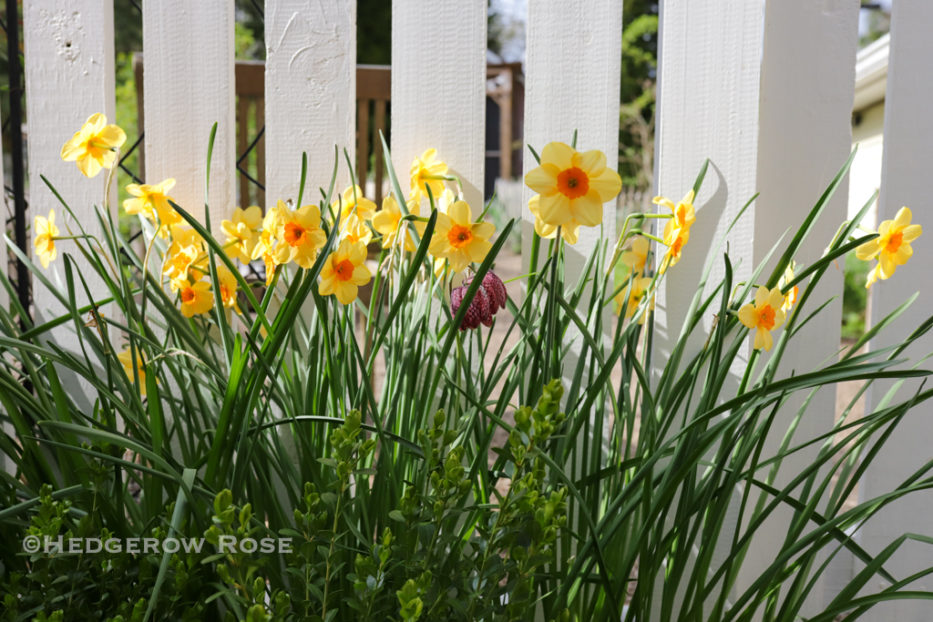
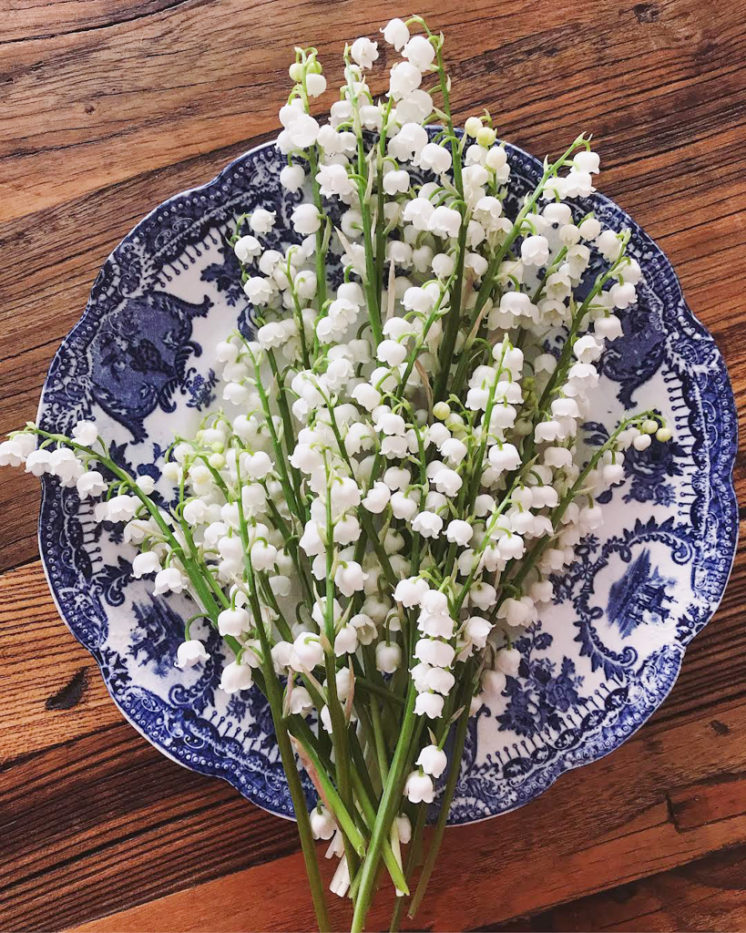

Narcissus, Lily-of-the-Valley and Alliums are some examples of spring flowers that were not bothered by the rabbits.

A note about the Anemones: Yes, they were eaten but only while they were young and emerging from the ground. Once they filled in they were more or less left alone. However, I still circled the base of the plants with a hoopty to protect them as they grew.

A note about the ornamental grasses: The rabbits did sometimes eat the grasses but they grew so much and so quickly it was barely noticeable. Actually, the rabbits tended to make their naptime nests at the base of the Calamagrostis ‘Karl Foerster’. During the heat of the day, you could always find one under there taking a snooze.

One final note: Like with deer, I think rabbits will eat anything if they’re hungry enough and also it may be a regional thing where they’ve developed a taste for certain things. For example, I’d always heard that rabbits don’t like rudbeckias but I could never grow them. The point of this story is to keep experimenting and see what works for you!

I’m sure I’m forgetting something but this list should get you started if you’re thinking of adding something new to your rabbit-friendly garden. Feel free to ask any questions in the comments and have a great week!


Love this post!
Thanks Christin! I know how much you love your bunnies. 🙂
Hi Laurie! I have only just found this post. Thank you for your observations. A couple of these plants, like hellebore and narcissus, are poisonous, so it’s not surprising that they leave them alone. I have terrible trouble with chrysanthemums- – they seem to love them! As for woody shrubs and perennials, they seem to like to file down their teeth on them, so they are not always safe either. I’m afraid I’m not so happy to have rabbits in my garden, with all that digging! They are considered a terrible pest in Australia.
Jane, thank you so much for your visit (and I apologize for the late reply!) I love hearing from gardeners around the globe and I really appreciate you sharing your experiences. 🙂
Thanks for the post. I would REALLY appreciate a link to the exact hardware cloth that you used – and any info on the size of the mesh, the gauge, how you put them together, etc., would be great. Looks like you may have left them silver, but I’d wondered about spray painting them matte green or brown to help them blend in a bit. Since my garden has already been planted without realizing I was planting all of the rabbits’ faves, I would dearly love to stop being disappointed when i walk out to see, for instance, the lilies I’ve waited for all summer have been eaten just as buds were about to open. All this to say, please send/post pix and any info on your “hoopties” or further tips about them! Would truly appreciate it!
Hi Beth! Thanks so much for asking….
In the past I purchased hardware cloth from Lowes…usually the 1/2 square because it’s less expensive than the 1/4 square size. You can find it in the garden section with all the fencing and it can be cut with sharp shears and attached with zip ties. I never did spray paint mine black but it definitely would help it to blend more so it could be worth trying! They have something like that on Amazon, if you just want to purchase it ready to go. 😀
I am in S W England in a rural area. I am having terrible problems with Rabbits, so thanks for your ideas. They have eaten hardy geraniums, wild garlic, alliums and lots of other things. I have tried to encourage wildlife so probably my fault. I am making wire cages around the base of clematis and other young plants and spraying with chilli oil and cayenne pepper.
Hi Carole, thank you so much for your comment and I’m sorry you’re having rabbit problems! With regard to the hot pepper, there is a product that I used with some success that is a hot pepper solution in a wax base that sticks to the leaves of the plants (without doing damage.) It’s made by Neptune’s Harvest and here’s a product link. Perhaps you can find that or some equivalent in England. Hope this helps! 🙂